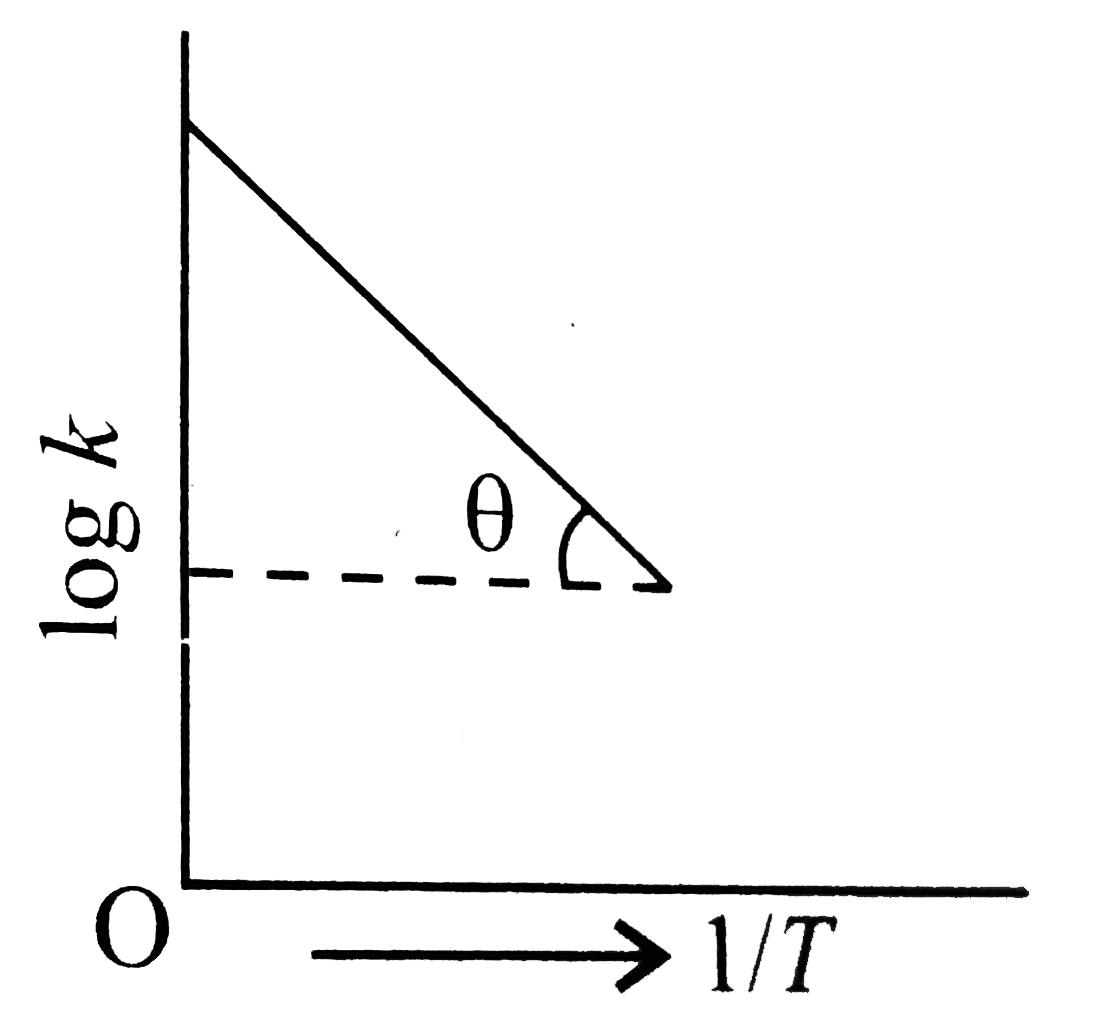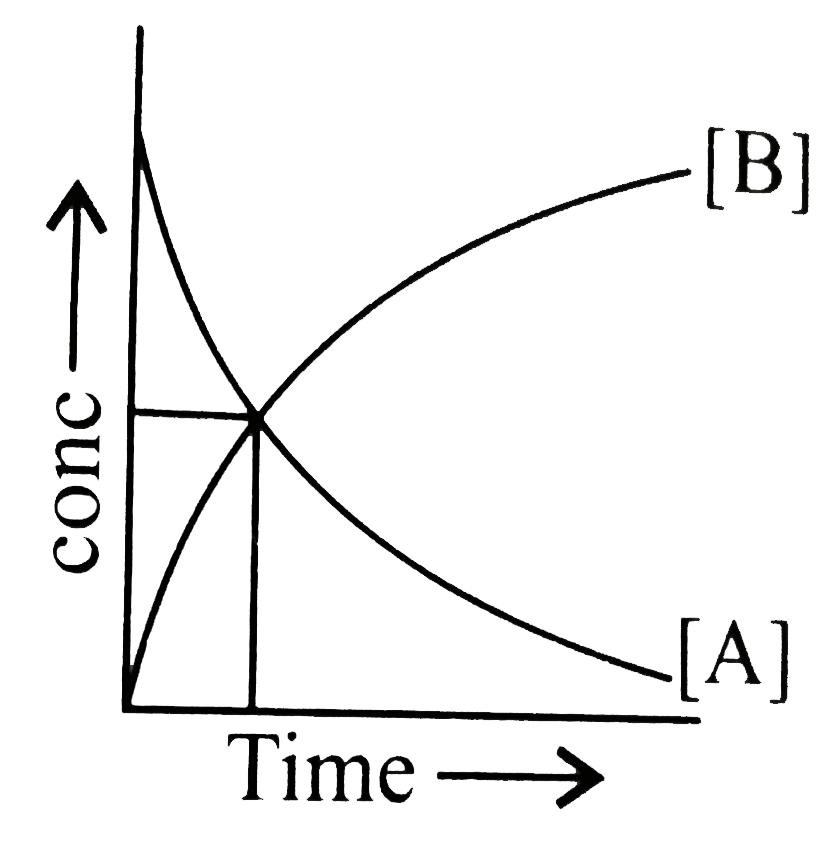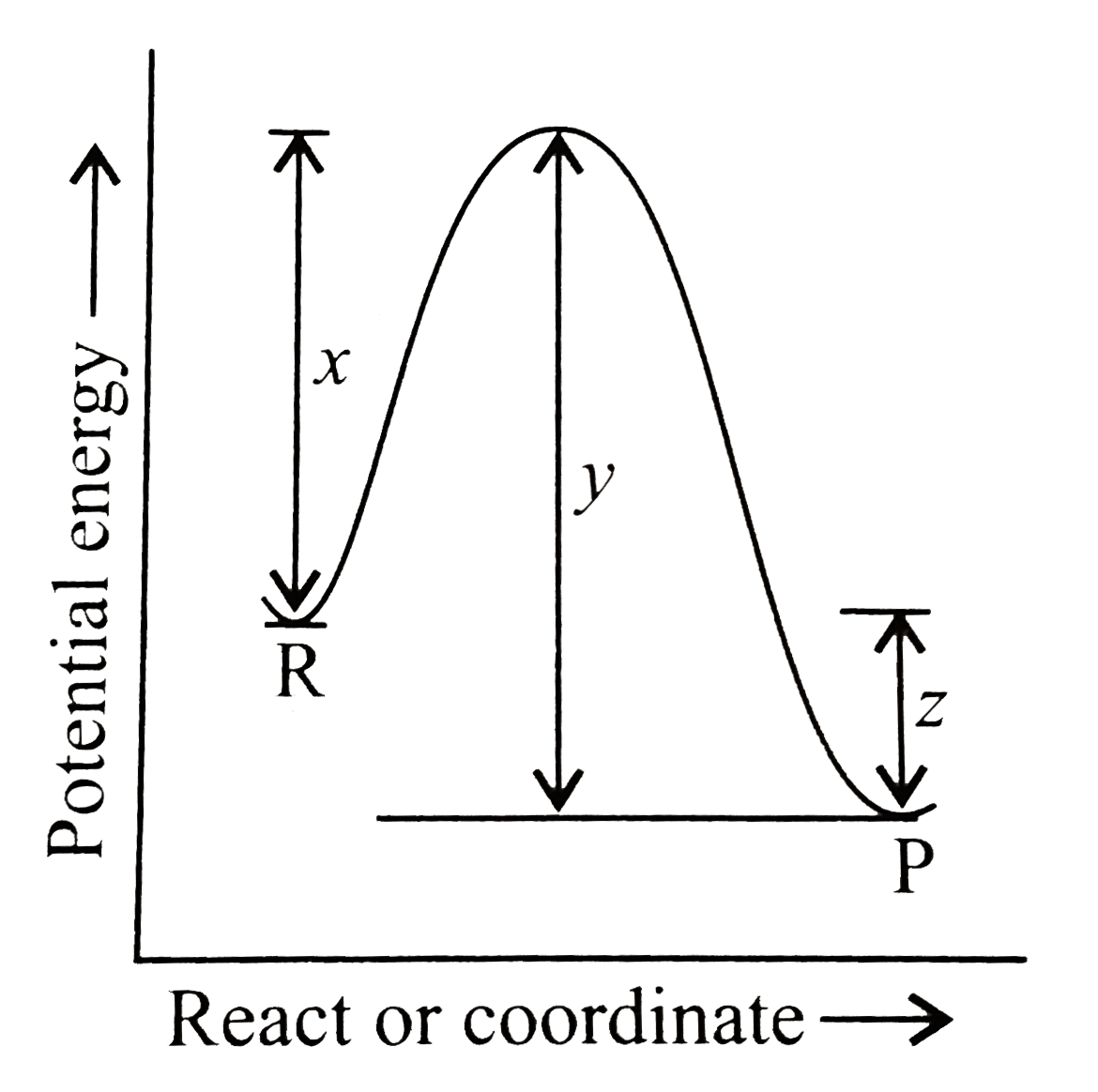Complete Solutions to Exercises Single Correct of chapter CHEMICAL KINETICS of Class 12 book with complete answers and questions
| Class 12 | CHEMISTRY |
| Chapter | CHEMICAL KINETICS |
| CENGAGE CHEMISTRY | Exercises Single Correct |
| Number Of Questions | 100 |
| Academic Year | 2023-24 |
The rate constant of a reaction with a virus is `3.3xx10^(-4)S^(-1)`. Time required for the virus to become `75%` inactivated is
View SolutionThe rate of the reaction
`2N_(2)O_(5) to 4NO_(2) + O_(2)`
can be written in three ways:
`(-d[N_(2)O_(5)])/(dt)=k[N_(2)O_(5)]`
`(d[NO_(2)])/(dt)=k'[N_(2)O_(5)]`
`(d[O_(2)])/(dt)=k''[N_(2)O_(5)]`
The relationship between k and k′ and between k and k′′ are-
View SolutionFor the ideal gaseous reaction, the rate is generally expressed in terms of `(dP)/(dt)` instead of `(dC)/(dt)` or `(dn)/(dt)` (where C=`(n)/(V)` is concentration and n the no. of moles). What is the relation among these three expressions if T and V are constant?
View SolutionA Geigger Muller counter is used to study the radioactive process. In the absence of radioactive substances `A`, it counts `3` disintegration per second (dps). At the start in the presence of `A`, it records `23` dps, and after `10 m` in `13 dps`,
i. What does it count after `20 m` in ?
View SolutionWhat is the trend of atomic size on moving from left to right in periodic table?
View Solution`ArarrB, DeltaH= -10 KJ mol^(-1), E_(a(f))=50 KJ mol^(-1)`, then `E_(a)` of `BrarrA` will be
View SolutionFollowing is the graph between `(a-x)` and time `t` for second order reaction `theta=tan^(-1)(0.5)OA=2L mol^(-)`

Hence, the rate at the start of the reaction is
View SolutionCalculate the rate of reaction for the change 2A→Products, when rate constant of the reaction is `2.1×10^ (−5)` time −1 and [A] 0 =0.2 M.
View Solution
The reaction kinetics can be studied by
View Solution
Half life id independent of the concentration of `A`. After `10 mi n` volume of `N_(2)` gas is `10 L` and after complete reaction is `50 L`. Hence, the rate constant is
View Solution`Ararr` Product, `[A]_(0) = 2M`. After `10 min` reaction is `10%` completed. If `(d[A])/(dt) = k[A]`, then `t_(1//2)` is approximately
View SolutionGraph between `log k` and `1//T` [`k` rate constant `(s^(-1))` and `T` and the temperature `(K)`] is a straight line with `OX =5, theta = tan^(-1) (1//2.303)`. Hence `-E_(a)` will be

View SolutionThe rate of a chemical reaction generally increases rapidly even for small temperature rise because of rapid increases in the
View Solution
Rate is expressed in `mol L^(-1) min^(-1)`.
In the above reaction, the order is
View SolutionRate constant `k = 1.2 xx 10^(3) mol^(-1) L s^(-1)` and `E_(a) = 2.0 xx 10^(2) kJ mol^(-1)`. When `T rarr oo`:
View SolutionThe rate constant of a reaction is `0.0693 min^(-1)`. Starting with `10 mol`, the rate of the reaction after `10 min` is
View SolutionThe graph between concentration `(X)` of the Product and time of the reaction `Ararr B` is of the type `1`. Hence, graph between `-(d[A])/(dt)` and time will be of the type:

View SolutionFollowing is the graph between `log T_(50)` and `log a` (`a =` initial concentration) for a given reaction at `27^(@)C`. Hence order is

View SolutionThe half life of radioactive element is `20 min`. The time interval between the stages of its `33%` and `67%` decay is
View SolutionWhich of the following reaction is not of the first order ?
View SolutionFor the reaction `X+3Y rarrZ`, which form of differential rate law is incorrect?
View Solution`60%` of a first order reaction was completed in `60 min`. The time taken for reactants to decompose to half of their original amount will be
View Solution`70%` of a first order reaction was completed in `70 min`. What is the half life of the reaction?
View Solution`80%` of a fisrt order reaction was completed in `70 min`. How much it will take for `90%` completion of a reaction?
View Solution`90%` of a first order reaction was completed in `100 min`. How much time it will take for `80%` completion of a reaction
View Solution`90%` of a first order reaction was completed in `100 min`.What is the half life of the reaction ?
View SolutionThe hydrolyiss of ester in alkaline medium is a
View SolutionA second order reaction requires `70 min` to change the concentration of reactants form `0.08 M` to `0.01 M`. How much time will require to become `0.04 M` ?
View SolutionThe data for the reaction: `A + B overset(k)rarr C`.
`|{:("Experiment",[A]_(0),[B]_(0),"Initial rate"),(1,0.012,0.035,0.10),(2,0.024,0.070,0.80),(3,0.024,0.035,0.10),(4,0.012,0.070,0.80):}|`
The rate law corresponding to the above data is
(a) Rate `= k[B]^(3)` , (b) Rate `= k[B]^(4)`
( c) Rate `= k[A][B]^(3)` , (d) Rate `= k[A]^(2)[B]^(2)`
View SolutionThe temperature at which the average speed of perfect gas molecules is double than at `17^(@)C` is
View SolutionThe temperature at which the average speed of perfect gas molecules is double than at `17^(@)C` is
View SolutionA catalyst lowers the activation energy of a reaction form `20 kJ mol^(-1)` to 10 `kJ mol^(-1)`. The temperature at which the uncatalyzed reaction will have the same rate as that of the catalyzed at `27^(@)C` is
View SolutionThe rate of a reaction increases four-fold when the concentration of reactant is increased `16` times. If the rate of reaction is `4 xx 10^(-6) mol L^(-1) s^(-1)` when the concentration of the reactant is `4 xx 10^(-4) mol L^(-1)`. The rate constant of the reaction will be
View SolutionTwo substances A and B are present such that `[A_(0)]=4[B_(0]` and half-life of A is 5 minutes and that of B is 15 minutes. If they start decaying at the same time following first order kinetics after how much time the concentration of both of them would be same ?
View SolutionA first order reaction: `A rarr` Products and a second order reaction: `2R rarr` Products both have half time of `20 min` when they are carried out taking `4 mol L^(-1)` of their respective reactants. The number of mole per litre of `A` and `R` remaining unreacted after`60 min` form the start of the reaction, respectively, will be
View SolutionThe inverison of cane sugar proceeds with half life of `500 min` at `pH 5` for any concentration of sugar. However, if `pH = 6`, if the half life changes to `50 min`. The rate law expresison for the sugar inverison can be written as
View SolutionIn a reaction carried out at `500 K, 0.001%` of the total number of colliisons are effective. The energy of activation of the reaction is approximately
View SolutionA substance decomposes by following first order kinetics. If 50% of the compound is decomposed in 120 minutes, how long will it take for 90% of the compound to decompose?
View SolutionIf a reaction `A+BrarrC` is exothermic to the extent of `30 KJ mol^(-1)`, the the forward reaction has an activation energy , `70KJ mol^(-1)`, the activation energy for the reverse reaction is
View SolutionThe rate constant, activation energy, and Arrphenius parameter of a chemical reaction are `3.0xx10^(-4)s^(-1), 104.4KJ mol^(-1)`, and `6.0xx10^(14)s^(-1)`, respectively. The value of rate constant as `Trarroo` is
View SolutionThe reaction `A(g) + 2B(g) rarr C(g) + D(g)` is an elementary process. In an experiment involvig this reaction, the initial partial pressure of `A` and `B` are `p_(A) = 0.60 atm` and `p_(B) = 0.80 atm`, respectively. When `p_(C ) = 0.20 atm`, the rate of reaction relative to the initial rate is
View SolutionA catalyst decreases `E_(a)` form `100 KJ mol^(-1)` to `80 KJ mol^(-1)`. At what temperature the rate of reaction in the absence of catalyst at `500 K` will be equal to rate reaction in the presence of catalyst ?
View SolutionWhich of the following graphs is for a second order reaction?
View SolutionThe accompanying figure depicts a change in concentration of species `A` and `B` for the reaction `ArarrB`, as a function of time. The point of inter section of the two curves represents

View SolutionWhich of the following is correct graph for the reaction?

View SolutionWhich of the following graphs represents zero order if
`A rarr P` At `t = 0 rArr [A]_(0)` At `t = t rArr [A]_(t)`
View SolutionWhich of the following expresisons give the effect of temperature on the rate constant?
View SolutionThe plot og `log k` vs `1//T` helps to calculate
View SolutionFor a first order reaction `t_(0.75)` is `1386 s`. Therefore, the specific rate constant is
View SolutionIn a first order reaction, the concentration of the reactant decreases form `0.8 M` to `0.4 M` in `15 min`. The time taken for the concentration to change form `0.1 M` to `0.025 M` is
View SolutionThe rate equation for the second order reaction `2A+B rarr C` is found to be: `rate = k[A][B]`. The correct statement in relation of this reaction is that
(a) The value of `k` is independent of the initial concentration of `A` and `B`.
(b) `t_(1//2)` is a constant.
(c) The rate of formation of `C` is twice the rate of disappearance of `A`.
(d) The unit of `k` must be `s^(-1)`
View SolutionA graph plotted between `log k` versus `1//T` for calculating activation energy is shown by
View SolutionThe potential energy diagram for a reaction `R rarr P` is given below. `Delta H^(ɵ)` of the reaction corresponds to the energy

View Solutionthe activation energy for a simple chemical reaction `A to B ` is `E_(alpha)` in forward direction .
the activation energy for reverse reaction
View Solutionthe reaction `A to B ` follows first order Kinetics the time taken for 0.8 mole of A to produce 0.6 mole of B is 1 H , what is the time taken for the conversion of 0.9 mole of A to 0.675mole of B?
View SolutionWrite the expression for quantum yield in photosynthesis.
View SolutionWhen the rate determined by the change in concentration of two different reactants, then the kinetic equation may be expressed as
View SolutionThe slope of the line graph of `log k` versus `1//T` for the reaction `N_(2)O_(5) rarr2NO_(2) + 1//2O_(2)` is `-5000`.Calculate the energy of activation of the reaction (in `kJ K^(-1) mol^(-1)`).
View SolutionThe inversion of a sugar follows first order rate equation which can be followed by noting the change in the rotation of the plane of polarization of light in the polarimeter. If `r_(oo), r_(f)` and `r_(0)` are the rotations at `t = oo, t = t`, and `t = 0`, then the first order reaction can be written as
(a)`k = (1)/(t)log.(r_(1)-r_(oo))/(r_(o) -r_(oo))`
(b) `k = (1)/(t)ln.(r_(0)-r_(oo))/(r_(t)-r_(o))`
(c) `k = (1)/(t)ln.(r_(oo)-r_(o))/(r_(oo)-r_(t))`
(d)`k = (1)/(t)ln.(r_(oo)-r_(t))/(r_(oo)-r_(0))`
View SolutionFor a certain decompoistion, the rate is `0.30 M s^(-1)` when the concentration of the reactant is `0.20 M`. If the reaction is order, the rate (in `M s^(-1)`) when concentration is increased theee times is
View SolutionFor a second order reaction `dx//dt =k(a-x)^(2)`. Its half life periof is
View SolutionFor a chemical reaction, activation energy of reactants depends on ______
View SolutionThe dissociation of nitrogen pentaoxide is a first order reaction. In first `24 min`, `75%` of nitrogen pentaoxide is dissociated. What amount of nitrogen pentaoxide will be left behind after one hour of the start of reaction?
View SolutionIn a certain reaction, `10%` of the reactant decomposes in one hour, `20%` in two hours, `30%` in theee hours, and so on. The dimenison of the velocity constant (rate constant) are
View SolutionThe decompoistion of `H_(2)O_(2)` can be followed by titration with `KMnO_(4)` and is found to be a first order reaction. The rate constant is `4.5 xx 10^(-2)`. In an experiment, the initial titre value as `25 mL`. The titre value will be `5 mL` after a lapse of
View SolutionThe half life of decompoistion of `N_(2)O_(5)` is a first order reaction represented by `N_(2)O_(5)rarrN_(2)O_(4)+1//2O_(2)`
After `15`min the volume of `O_(2)` profuced is `9ml` and at the end of the reaction `35ml`. The rate constant is equal to
View SolutionThe rate constant of a reactant is `1.5 xx 10^(-3)` at `25^(@)C` and `2.1 xx 10^(-2)` at `60^(@)C`. The activation energy is
View SolutionIn the reaction `A + B rarr C+D`, the concentration of `A` and `B` are equal and the rate of the reaction is rate `= k[A][B]`. The integrated rate equation for this reaction is
View SolutionIf a graph is plotted between `log (a-x)` and `t`, the slope of the straight line is equal to `-0.03`. The specific reaction rate will be
View SolutionIn the Wilhelmey equation of a first order reaction `c_(t) = c_(0)e^(-kt)`. If the initial concentration `c_(0)` is increased `m` times, then
View SolutionThe mechanism of the reaction
`2NO + O_(2) rarr 2NO_(2)` is
`NO + NO underset(k_(-1))overset(k_(1))hArr N_(2)O_(2) ("fast")`
`N_(2)O_(2) + O_(2) overset(k_(2))rarr 2NO_(2) (slow)`
The rate constant of the reaction is
View SolutionTrue statement is
View SolutionIn a second order reaction 20% of a substance is dissociated in 40 min. The time taken by 80% of its dissociation is :
View Solution`t_(1//2) =` constant confirms the first order of the reaction as one `a^(2)t_(1//2) =` constant confirms that the reaction is of
View SolutionCollision theory is applicable to
View SolutionThe wrong statement is
View SolutionWhich of the following will react at the highest rate ?
View SolutionFor a reaction, the rate constant is expressed as `k = Ae^(-40000//T)`. The energy of the activation is
View SolutionA reaction takes place in theee steps: the rate constant are `k_(1), k_(2), and k_(3)`. The overall rate constant `k=(k_(1)k_(3))/(k_(2))`. If `E_(1), E_(2)`, and `E_(3)` (energy of activation) are `60, 30` and `10kJ`, respectively, the overall energy of activation is
View SolutionA reaction rate constant is given by
`k = 1.2 xx 10^(14) e^((-2500)/(RT))s^(-1)`. It means
View SolutionFor the reaction `2NO(g) + H_(2)(g) rarr N_(2)O(g) + H_(2)O(g)`, at `900 K` following data are observed.
`{:("Initial pressure of NO (atm)","Initial pressure of" H_(2)o (atm),"Initial rate of pressure decrease" (atm min^(-1))),(0.150,0.40,0.020),(0.075,0.40,0.005),(0.150,0.20,0.010):}`
Find the order of reaction.
View SolutionAn exothermic reaction `ArarrB` has an activation energy of `17 kJ` per mole of `A`. The heat of the reaction is `40 kJ`. Calculate the activation energy for the reverse reaction `B rarr A`.
View Solution`k_(34^(@)):k_(35^(@)) lt 1`, then
View SolutionThe compoistion of `N_(2)O_(5)` is a first order reaction represented by: `N_(2)O_(5) rarr N_(2)O_(4) + 1//2O_(2)`.
After `20 min` the volume of `O_(2)` profuced is `10 mL` and at the end of the reaction `40 mL`. The rate constant is equal to
View SolutionA catalyst only
View SolutionThe free energy change the due to a reaction is zero when
View SolutionWhat is `Delta H` for the reaction `A + B rarr C` where the mechanism involves several kinetics steps.

(a) `11 "kcal mol"^(-1)`
(b)`4 "kcal mol"^(-1)`
(c) `5 "kcal mol"^(-1)`
(d) `22 "kcal mol"^(-1)`
View SolutionWhat can you say about the existence of `A` if the potential energy diagram for the reaction
`Ararr B` looks line

(a) `A` will exist
(b) `A` will not exist
(c) `B` will not exist
(d) `A` and `B` are in equilibrium
View SolutionIn a multistep reaction such as `A + B rarr Q rarr C`. The potential energy diagram is shown below. What is `E_(a)` for the reaction `Q rarr C` ?

(a)`3 kcal mol^(-1)`
(b)`5 kcal mol^(-1)`
(c) `8 kcal mol^(-1)`
(d) `11 kcal mol^(-1)`
View SolutionIn which statement is true ?
View SolutionGiven the following two mechanisms, one with catalyst and the other without catalyst.
(i) `A + B rarr C` (slow)
(ii) `C +B rarr F + A` (fast)
(iii) `B + B rarr F` (slow)
Which mechanism use the catalyst and what is it ?
View SolutionThe mechanism for the overall reaction is
`A_(2) + B rarr C`
`A_(2) rarr 2A` (slow)
`2A + B rarr X` (fast)
If a catalyst `D` changes the mechanism to
`A_(2) + D rarr A_(2) D` (slow)
`A_(2) D rArr 2A+D` (fast)
`2A +B rarr C` (fast)
Which is the rate expresison for the reaction with and without a catalyst ?
View SolutionWhich of the following statement is correct
View SolutionFor a chemical reaction `2X + Y rarrZ`, the rate of appearance of `Z` is `0.05 mol L^(-1) min^(-1)`. The rate of diappearance of `X` will be
View SolutionA chemical reaction occurs as a result of colliisons between reacting molecules. Therefore, the reaction rate is given by
View SolutionFor profucing effective colliisons, the colliding molecules must have
View SolutionA following mechanism has been proposed for a reaction
`2A +B rarr D rarr E`
`A+ B rarrC+D `(slow)
`A+C rarr E` (fast)
The rate law expression for the reaction by RDS methd is:
View SolutionFor a chemical reaction `A rarr B`, it is found that the rate of reaction doubles when the concentration of `A` is increased `4` times. What is the order of reaction ? Suggest the rate law also.
View SolutionFor a hypothetical reaction: `A+B rarr` Products, the rate law is `r = k[A][B]^(0)`. The order of reaction is
View SolutionA hypothetical reaction `A_(2) + B_(2) rarr 2AB` follows the mechanism as given below:
`A_(2) hArr A+A ("fast")`
`A+B_(2) rarr AB+B` (slow)
`A+B rarr AB` (fast)
The order of the overall reaction is
View Solution
Exercises Single Correct questions and complete solutions for chapter CHEMICAL KINETICS of CENGAGE CHEMISTRY (ENGLISH) of Class 12
All Exercises from CENGAGE CHEMISTRY Class 12 CHEMISTRY CHEMICAL KINETICS
- Archives Fill In The Blanks
- Archives Integer
- Archives Multiple Correct
- Archives Single Correct
- Archives Subjective
- Archives True/False
- Ex 4.1 (Objective)
- Ex 4.2 (Objective)
- Ex 4.3 (Objective)
- Ex 4.3 More Than One Correct
- Ex4.4 Objective
- Exercises Assertion-Reasoning
- Exercises Fill In The Blanks
- Exercises Integer
- Exercises Linked Comprehension
- Exercises Multiple Correct
- Exercises Single Correct
- Exercises True/False
- Illustration
- Solved Example